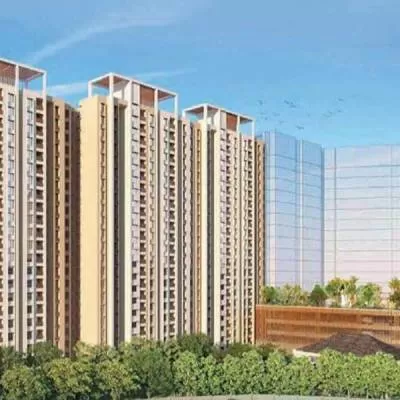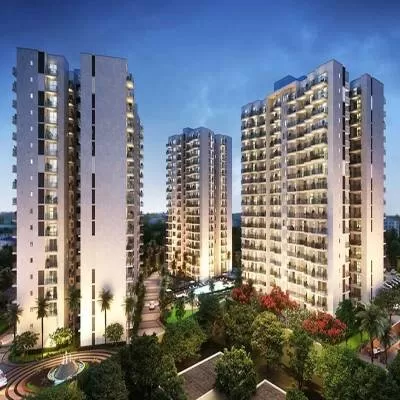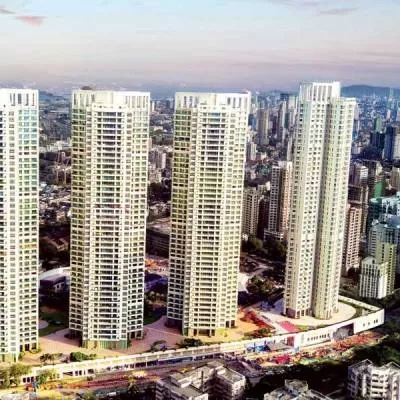- Home
- Real Estate
- Challenging Trends
Challenging Trends
Read full article
CW Gold Benefits
- Weekly Industry Updates
- Industry Feature Stories
- Premium Newsletter Access
- Building Material Prices (weekly) + trends/analysis
- Best Stories from our sister publications - Indian Cement Review, Equipment India, Infrastructure Today
- Sector focused Research Reports
- Sector Wise Updates (infrastructure, cement, equipment & construction) + trend analysis
- Exclusive text & video interviews
- Digital Delivery
- Financial Data for publically listed companies + Analysis
- Preconceptual Projects in the pipeline PAN India
CW DESIGN BUILD looks into recent trends in the building and architectural fraternity, and explores their impact on the industry. Today, there are about 111,350 registered architects in India. “Compared to the past two to three years, the number of architects would have increased to an average of 14,000 a year,” reckons Vijay Garg, President, Council of Architecture. That said, he emphasises upon the dearth of architects in the country. “If you see the population and the quantum of construction being done in India, we need anything between 10 lakh and 20 lakh architects. And we are far below the required number.”However, several trends have been emerging in recent times, which could be a result of this shortage.The ‘in-house’ trendToday, several leading builders and developers have an in-house design team to plan their projects. Could this pose a challenge to independent architectural firms? Garg disagrees, saying, “In-house architects (architects within the developer company) are mostly involved in coordination jobs. And considering the number of jobs available out there, apart from builder/developer projects, independent architectural firms would be occupied doing their own work.”Gaurav Sanghavi, Co-Founder, Pentaspace Design Studio, is in agreement. “The skill set of a conceptual architect (independent architect) is different from an architect looking after the execution of the project (in-house architect). An independent architect brings fresh ideas, creativity and innovation to a project. And in close coordination with the in-house architectural team, the project can be executed better.”Anjan Gupta, Principal, Anjan Gupta Architects, comments, “Most developers I know in Kolkata have in-house architects but they do not do the main design. They check all the drawings and co-draw with the independent architects.” In many cases, budding architects who do not get a chance to work with renowned architects join the design team of developer companies. “Through this, they get to work with large independent architectural firms, whose drawing they just follow for a particular assigned project.”A defined roleIt is increasingly evident that several builders and developers, especially large companies, have a chief design head incharge of upcoming projects. There certainly could be some additional benefits to having an in-house team. For a builder/developer, anything that is designed has to make business sense. And, there are multiple functions that go along with architecture that need to be integrated and work in sync for the building to perform. Apart from the aesthetic intent an independent architectural firm brings to the table, they may not be involved or aware of the implications when it comes to cost, time or logistics of execution. For instance, Atul Date, Project Group Head, Rustomjee Group, shares, “An architect would prefer having large aluminium windows. But is it possible to bring those windows up at site? Get them installed? What is the size of the openings? Is there a possibility of lifting arrangement? All these things is where we come in and give our vital inputs.” He further explains, “We outsource the creative part of the design to external architects. What the external firms unfortunately tend to miss out on is the analytical part of design such as costing, integrated coordination and price of individual items.” He adds that independent firms generally look predominantly at aesthetics rather than smaller aspects of cost procurement or maybe material characteristics. This is what the in-house team takes care of. For his part, Amar Tendulkar, Chief of Design and Sustainability, Mahindra Lifespace Developers, says, “To begin with, we do not view the teams as disparate entities, or as ‘external versus in-house’ design teams. We think of our design consultants and in-house team as one large team that works synergistically to achieve our business objectives.” He adds that the role of the in-house team is to work in tandem with consultant partners to ignite ideas and generate the best output possible. “These ideas or inputs can be creative, or towards design management, or time or cost optimisation that help deliver on our credo of ‘Sell Genuinely, Build Responsibly and Deliver on Time’. External consultants (design, architectural, services, structural, etc) are appointed on the basis of expertise and project requirements, which vary. Mahindra Lifespace chooses architects who have delivered in the past and can closely align with its vision and aspirations for thoughtful and cutting-edge design.” The builders’ approachSo, how do builders invite proposals from independent architectural firms?A builder/promoter wants to have a say on what the final product looks like. A lot of mock-ups are done on site. While a lot is visualised on paper, in most cases decisions are taken based on mock-ups – either visual or with virtual reality or other digital methods. It’s only when the stakeholders approve of the design that one can go ahead. Elaborating on the process, Date from Rustomjee says the design is done in a number of stages. It all starts with the concept, which is then developed into a scheme and then comes the tender for the drawing stage. As things evolve, changes keep occurring in design. Hence, it is more than just preparing a drawing; it is an evolved process. Mahindra Lifespace Developers has a pan-India presence across eight city clusters. It is also one of the few real-estate companies in the country with a presence spanning affordable housing via the ‘Happinest’ brand; mid-premium residences; and integrated cities and industrial clusters (Mahindra World City and ORIGINS by Mahindra World City). “For each of our projects, we work with consultants who have proven expertise and can help develop landmark projects,” shares Tendulkar.“ Before inviting proposals from architecture consultants, we do in-house brainstorming and test-fits to understand a project’s potential and development scope. We then reach out to experienced consultants who are the best fit in terms of prior delivery track record, be it on profitability or via landmark projects that have successfully blended into the city fabric while garnering long-lasting appreciation from users. We also gauge attitude, and team work and collaboration capabilities.” As a pioneer of sustainable urbanisation and the green homes movement in India, the architect’s focus on sustainability parameters throughout the project lifecycle is a key consideration area for the company.Global invasionIn another recent trend, global design firms have been stepping in to offer consolidated services, which include architectural services. “This affects smaller practices who are forced to either tie up with these international consultants as local architects or look for smaller projects,” says Harsh Pote, Co-founder, Pentaspace Design Studio. Indian architects are being reduced to making just working drawings. “To survive this competition,” he suggests,“one has to carve a niche in the segment.”Meanwhile, Gupta believes it is better to have architects from abroad who can render comprehensive architectural engineering/services and add value to projects. “At present, when I look at the new buildings, nothing inspires me. Also, the present scenario does not offer challenges technologically as well as aesthetically, especially when I consider my years of experience of working abroad with renowned architectural firms.” Specific to the Kolkata scenario, he says that most architects don’t seem to address the socio-cultural environment and technology. Rather the focus is more on replicating the architectural style from abroad.However, with this global invasion, Sanghavi sees the role of an independent architect weakening as bigger and prestigious jobs are being taken away. “The client does not give due credit to a local design architect compared to an international architect,” he says.Coming up next!Are there any other upcoming trends that could impact the architect fraternity?Referring to artificial intelligence (AI) on the horizon, Pote says, “International architects will adapt to this trend faster vis-à-vis the Indian architect, and this will pose a major challenge in future to the architects of the Indian fraternity.”For his part, Garg adds that owing to shortage of registered firms, the non-professionals continue to practice. Going forward, this could be an area of concern for the profession.




















